Creating a Course (faculty only)
1. After logging in, click My OpenLab in the main menu. Then click My Courses in the right-hand menu. On the My Courses page, click + Create / Clone a Course at the top of the page.

Step One: Profile
1. On the first course creation page, you can either choose to create a new course or clone an existing course. Cloning will create an exact copy of an existing course, keeping all content you created or uploaded, but student work will not be copied over. The course avatar, course settings, and site settings will all remain the same, although you can change anything as necessary. View instructions here on cloning a course or continue below for creating a new course.
2. Choose Create a New Course.
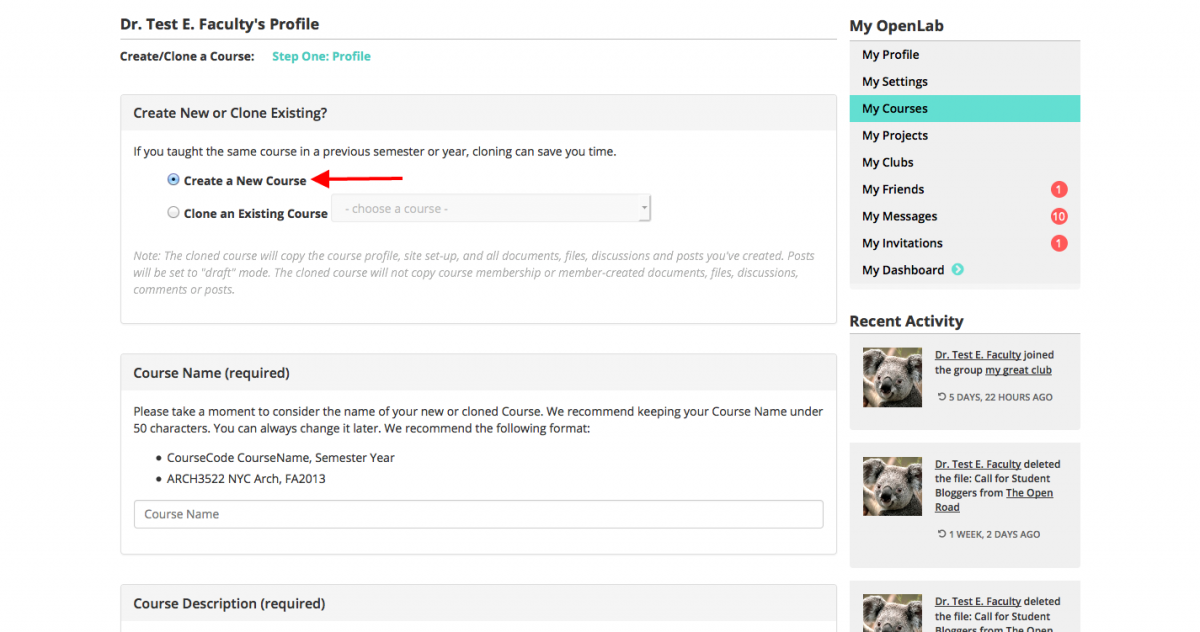
3. Enter the Course Name and Course Description. These are both required. If you’re not ready with your full description you can always edit this later.
4. Choose the Sharing Settings. If you enable sharing, this will allow other City Tech faculty to clone your course. When it is cloned, there will be a link on the profile of the cloned course that acknowledges you as the creator of the source course.
5. In the Faculty section, you will be listed as Primary Faculty. If you are co-teaching the course, you can add additional faculty here by typing the name in the box, and selecting the name from the dropdown list that appears. This will add them to the course profile so they are listed as instructors. Please note: To become admins for this course, these additional instructors must also join the course and be promoted to admin.
6. Choose your Collaboration Tools. By default, Announcements are enabled, but you can also enable Discussion, Docs, and File Library.
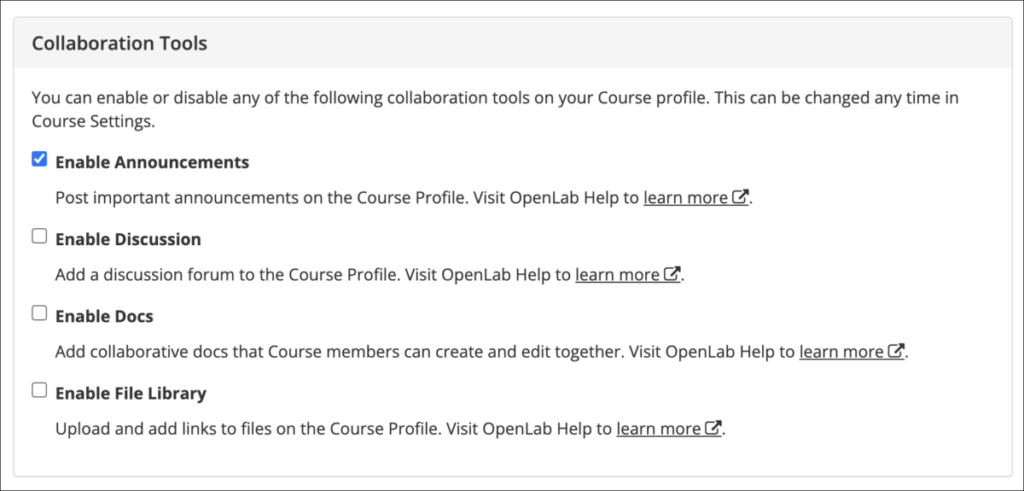
7. Choose your School and Department. These are both required, but you may choose more than one if your course is interdisciplinary.
4. Choose a site URL. The URL, or web address, is what you see in the location bar of your browser. (e.g. https://openlab.citytech.cuny.edu/MySite). It cannot be changed, so take a moment to read through the guidelines below, and consider the URL carefully.
- It is a good practice to add Semester and Year to differentiate between your courses from one semester to another: FacultyLastNameCourseCodeSemYear. For example: smithadv1100sp2012
- If you teach multiple sections and plan to create additional course sites on the OpenLab, consider adding other identifying information to the URL, such as the section number or days of the week (for example, MW or TuTh).
If you have an existing OpenLab site that is not already linked to a Course, Project, Club, or Portfolio you can choose to Use an existing site for your course. Please note: This option will not appear if you do not have an unlinked existing site.
If you have an existing site that is not on the OpenLab, you can choose to Use an external site for your course. If you choose this option, you can check for an RSS feed so that activity is displayed on the profile page. To do so, type in the URL and click the Check button. If it does not automatically find a feed you can type one in yourself.
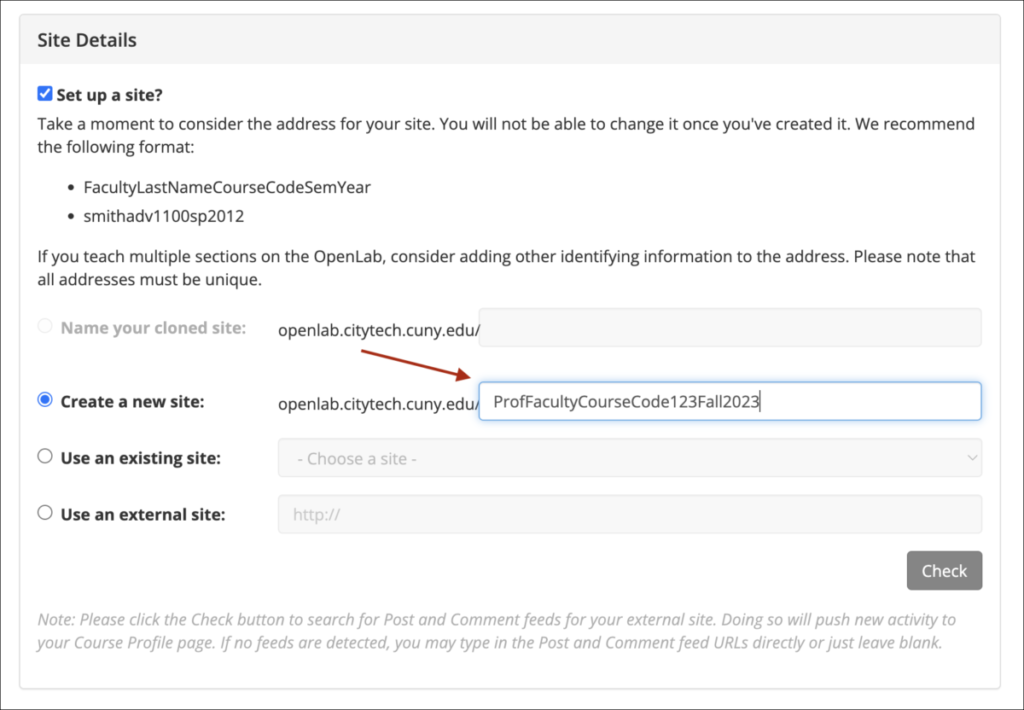
9. Choose the Site Template for your Course. This will provide a basic structure and setup for your site to help you get started. For example, all course templates include pages like Syllabus, Assignments, and Course Resources, and menus that are already set up for you. The template you choose will depend on how you’ll be using your Course Site. If you intend on having students posting and commenting, use the Interactive template, which is selected by default. If you will be using your site to post course information, including regular updates about the course, choose the Informational template.
10. When you are finished, click Create Course and Continue.
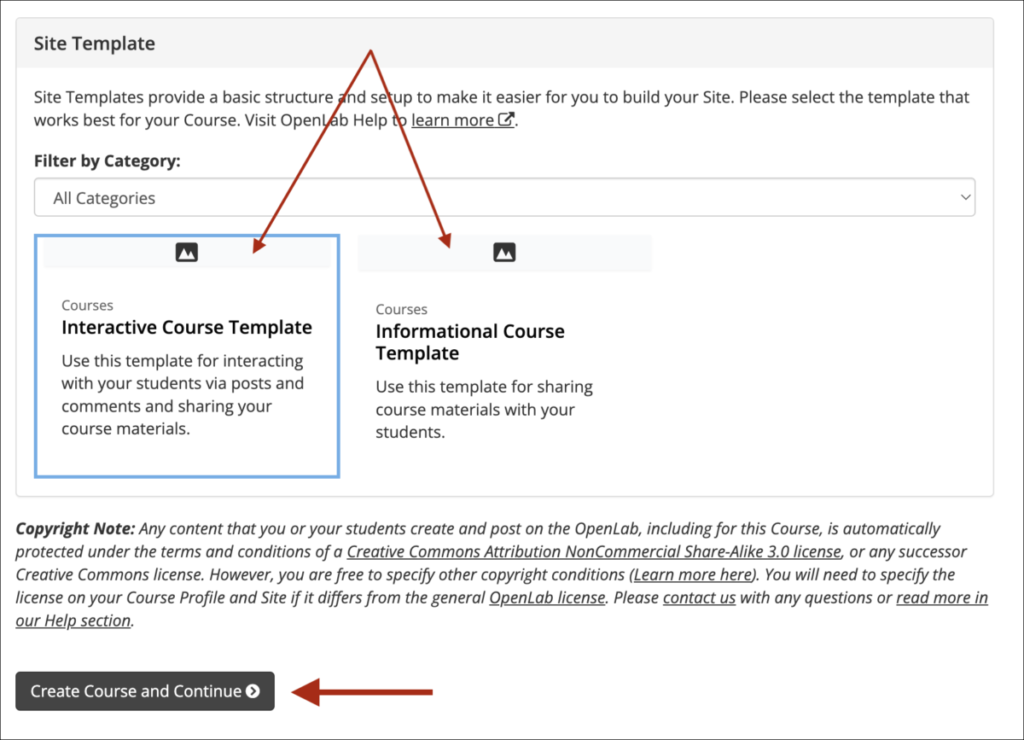
Step Two: Privacy Settings
Profile Privacy Settings
1. Choose your Profile privacy settings. These settings control the privacy of the course profile, and are different from the course site, which you will choose next. You can change the settings at any time.
This is a public course:
- The course profile and related content and activity will be visible to the public, whether or not they are members of the OpenLab.
- The course profile will be listed in the OpenLab course directory and search results.
- Any OpenLab member may join this course.
- Even if you want your course to be private, you might want to choose this option for the first few weeks of the semester because it is easier for students to join.
This is a private course:
- The course profile and related content and activity will only be visible to members of the course.
- The course profile will be listed in the course directory and search results.
- Only OpenLab members who request membership and are accepted by the professor may join this course.
This is a hidden course:
- The course profile, related content, and activity will only be visible only to members of the course.
- The course profile will NOT be listed in the course directory and search results.
- Only OpenLab members who are invited may join this course.
Site Privacy Settings
2. Next, choose the privacy settings for your course site.
Public
Allow search engines to index this site:
- Anyone can visit your site without needing a password.
- Search engines will index all pages and posts, meaning your site will show up in search results on Google and others.
- Choose this option for maximum public visibility.
Ask search engines not to index this site:
- Visitors do not need a password to see your site if they know the URL or are linked from elsewhere, but Google and other search engines should not index your posts and pages. (Please note: it is up to search engines to honor your request.)
- Choose this option if you want to be able to show the site to people who are not members of the OpenLab, but you don’t want people to stumble upon it via search engines.
Private
I would like my site to be visible only to registered users of City Tech OpenLab:
- Anyone who is signed into the OpenLab can see this site.
- Choose this option if you’d only like the OpenLab community to be able to see the site.
I would like my site to be visible to registered users of this Course:
- Only members of your course will be able to visit the site.
- Choose this option if you only want enrolled students to be able to see the site.
Hidden
I would like my site to be visible only to site administrators:
- No one except site admins (only the professor, unless you add others) can see the site.
- You may choose this option if you are in the process of creating your course site, but it would rarely be useful during an active course.
3. When you’re done, click Next Step.

Step Three: Avatar
1. Upload an avatar that reflects the subject or topic of your course. If you have an image file ready that you would like to use as your avatar, click Browse or Choose File. Select the file you want to use from your computer or flash drive and then click Upload Image. If you don’t have an image you would like to use you can always add one later–just click Next Step (if you are finished skip to the next section, “Step Four: Invite Members”).
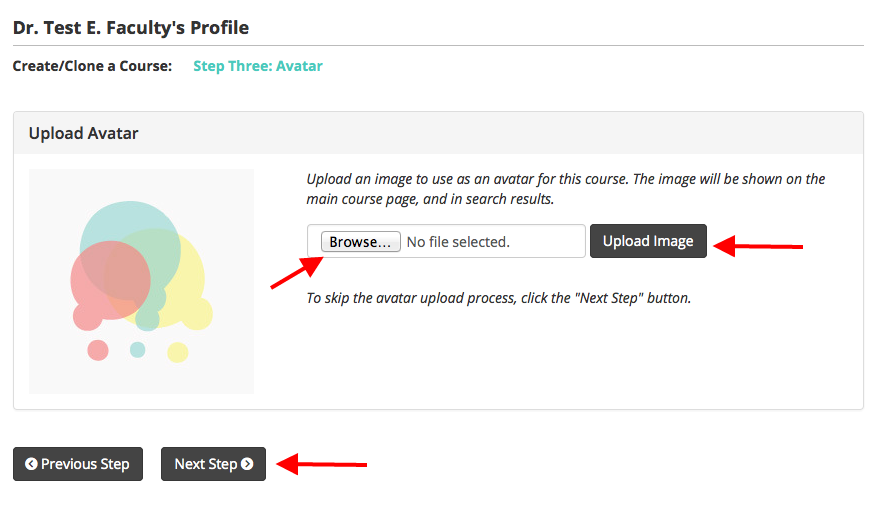
2. Crop the image by dragging the square around the portion of the image you want to use and then click Crop Image.
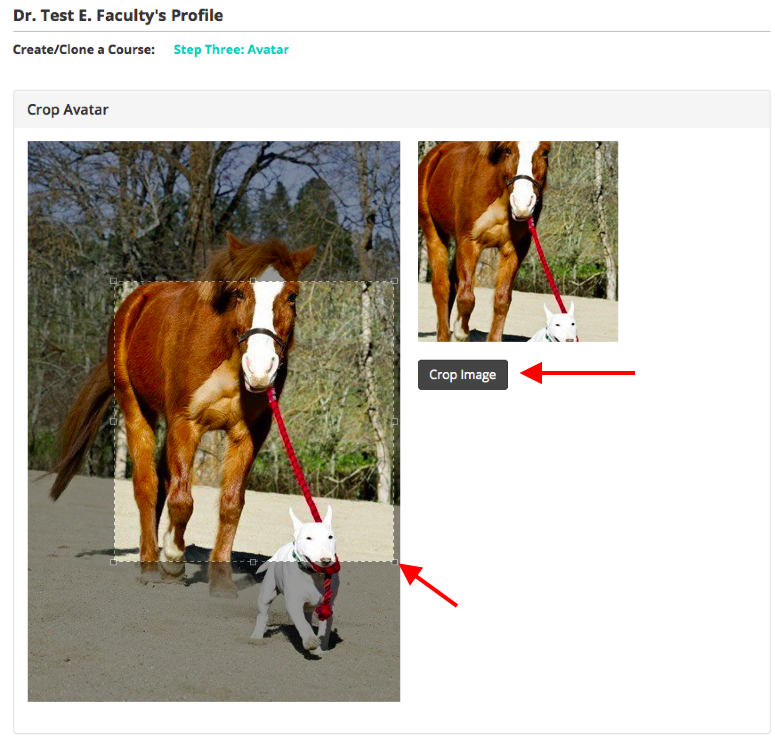
3. When you are done click Next Step.
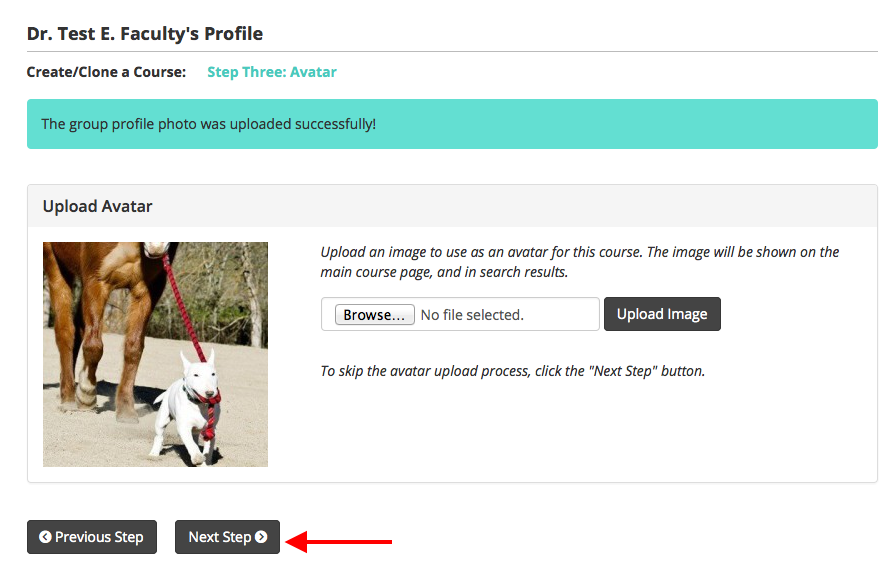
Step Four: Inviting Members
1. If you would like to invite members to your Course, start typing their display name. When a dropdown list appears, select their name from the list. Their name and avatar will appear under the heading Invites. When you’re finished, or if you do not wish to invite anyone at this time (you can always do it later!), click Finish, at the bottom of the page.

2. After you click Finish you will see your new Course Profile page! From here, you can (a) change settings such as privacy, Course description, or (b) change your avatar. From your Course Profile you can also access your (c) Course Site and Dashboard (the admin panel, where you will edit and add content to your Course Site).

Now that your course has been created, you may want to modify settings and start building your site.
Help information on course site privacy courtesy of Blogs@Baruch at Baruch College, CUNY.









